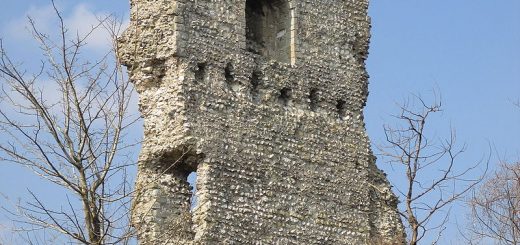The Commandery, Worcester
The Grade I listed Commandery in Worcester apparently has a reputation for haunt like experiences. According to a Birmingham Mail article by Helen Harper (19 May 2020) entitled ‘The most haunted places in Worcestershire: Chilling stories of underground cells and witches’, ‘the 800-year-old building in Worcester is famous for being the headquarters of the Royalists in the Civil War, but tradition has it that the building was founded as a hospital in the 11th century by St Wulfstan, the Bishop of Worcester. However, the hospital was built around a much earlier Saxon chapel. It’s been used as a chapel, alms house, home and a place of respite for weary travellers amongst other things.
 But on to ghosts. The Duke of Hamilton, who lived there for a time, was seriously injured during the Battle of Worcester. He was carried back to The Commandery with blood pouring from his leg. He later died of his injuries and was buried under the floor of the building before being exhumed and reburied in Worcester Cathedral.
But on to ghosts. The Duke of Hamilton, who lived there for a time, was seriously injured during the Battle of Worcester. He was carried back to The Commandery with blood pouring from his leg. He later died of his injuries and was buried under the floor of the building before being exhumed and reburied in Worcester Cathedral.
It’s said the Duke’s spirit haunts the Solar room – the living quarters of the master. Visitors have felt a strange presence there. One man arrived early for a meeting and left with some haste, not able to explain what he had experience but vowing never to go back.
Lots of ghost hunts have been held at the site where there have been reports of a crying woman, a ghostly monk and the sound of swords clashing.’
William Hamilton, 2nd Duke of Hamilton (Born 14 December 1616), died at The Commandery on 12 September 1651 from wounds taken during the battle. The Commandery was the future King Charles II’s headquarters during the Battle of Worcester which took place on 3 September 1651 and was the last battle of the Civil War as it effectively destroyed the last remaining significant Royalist army.
Further experiences were mentioned in a Gary Bills-Geddes Malvern Gazette article dated 27 October 2017 in which he reports that, ‘doors open and close by themselves, card displays spin and Commandery interpretations assistant, Carol Campbell once saw a disembodied foot coming down in mid-step, with only the suggestion of a garment above it. From what she could make out, the shoe on the foot was mustard yellow, a popular colour in medieval and Tudor times.
But shadow figures appear to be the most common spectres at The Commandery. They glide across the Minstrel’s Gallery in the Great Hall and they cross doorways, always unexpected and often in broad daylight.
Interpretations assistant, Kerry Whitehouse said: “There’s nothing nasty about this. It’s like they are saying, we are still here. They are tall shapes – human-like shadows.”
But it was Carol who had perhaps the most dramatic encounter with one of these shadow figures.
She said: “I was in the Great Hall, waiting for a school party, when I saw a shadow open a door that was locked, enter the room and close the door behind it. I heard and saw the latch move.”
When she checked, the door was still locked.
Carol confesses that this gave her “a bit of a jolt”, and Kerry also had a strange tale to tell in the Hamilton Room, where the second Duke of
Hamilton died of his wounds, after the Battle of Worcester and where, for a while, he was buried beneath the floor.
A small stone, from apparently nowhere, flew through the air and struck her leg.
And other things have been known to fly in that room.
Kerry said: “A clock used to fly off the mantlepiece, before it was moved.”
In medieval times, the Commandery was a monastic hospital, and Carol has seen a cowled figure glide across a landing. The Commandery also has an apparently haunted cupboard, where various members of staff have heard monkish chanting.




Recent Comments